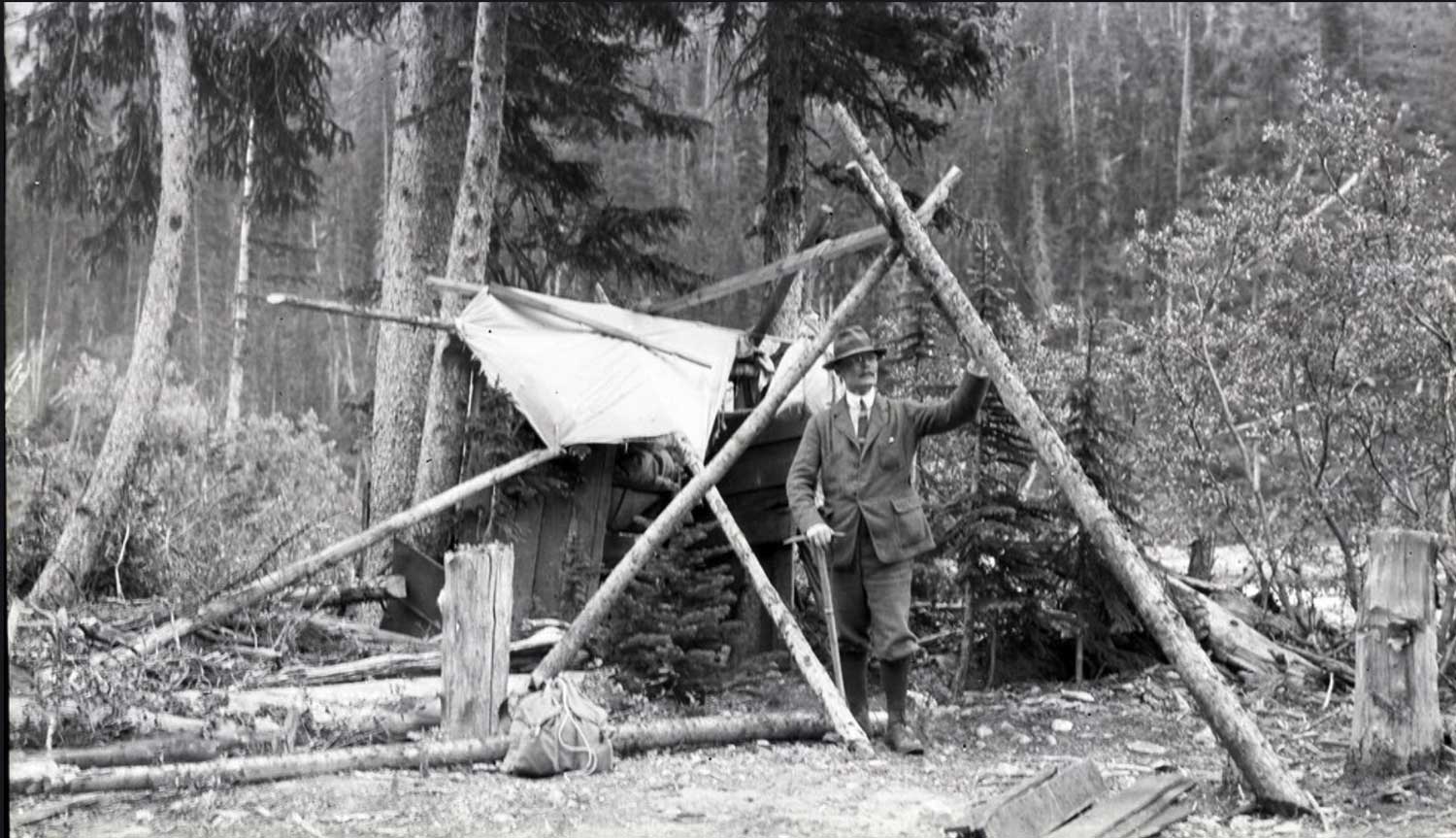E of headwaters of Tête Creek
52.8333 N 119.6 W — Map 83D/13 — Google — GeoHack
Earliest known reference to this name is 1947 (Zillmer)
Name officially adopted in 1962
Official in BC – Canada
Fabergé map Cariboo 1949

Andrew James Gilmour standing in camp with an ice axe
AAC Gilmour Collection AJG.B4A7.048
American Alpine Club
In 1916, Gilmour took part in explorations of the peaks and glaciers north ofWhitehorn Mountain and west of Robson Pass, including the first ascent of Mount Longstaff.
With Newman Diefendorf Waffl [1879–1930] and Helen I. Buck [1884–1972], he made the first ascent of Mount Sir Alexander in 1929. Gilmour Glacier was named in 1947 by Raymond T. Zillmer [1887–1960].
Andrew Gilmour died in New York after an illness of nine months. By vocation a dermatologist, his avocation was travel and alpinism and for 30 years his activity ranged through the Alps, the Pyrenees, the American and Canadian Rockies, Wales and the Lake District, Mexico, the Cascades and the lesser peaks of the eastern United States.
Although his climbing interest manifested itself as early as 1905 with an ascent of the Gross Glockner, it was not until 1914 that it ripened with full-fledged mountaineering. That summer he joined and Holway and Frederic K. Butters in a month’s arduous back-packing trip in the southern Selkirks.
The close friendship thus formed between Holway and Gilmour led to further important explorations and first ascents: in 1915, of Mount Edith Cavell and the entirely unknown country at the headwaters of Small Creek and Horse Creek, with a nearly successful ascent of Mount Longstaff, and, in 1916, to the capture of the latter together with Mount Phillips, the approach being made from the Swiftcurrent Creek side.
These expeditions by Holway and Gilmour were personal “backpacking” enterprises into virgin territory. They were performed without Swiss guides or pack-trains, although an occasional horse might assist in the preliminary stage. Their main reliance was upon local men who helped to pack the party in and then acted in support by relaying provisions and sometimes by hunting game.
Dr. Gilmour was a member of the American, Canadian, Swiss and French Alpine clubs, the Explorers’ club, and the Appalachian cub. He was a fellow of the Royal Geographic society of London.
- Strumia, Max M., and Hainsworth, William R. “Gleanings in the Canadian Rockies, 1930.” American Alpine Journal, (1931). American Alpine Club
- H. P. “Gilmour, Andrew James, 1871 –1941.” American Alpine Journal, (1942). American Alpine Club
- Zillmer, Raymond T. [1887–1960]. “Exploration of the McLennan completed.” Canadian Alpine Journal, Vol. 30 (1947):85-95
- Thorington, James Monroe [1895–1989]. “Canada, Cariboo Range.” American Alpine Journal, Vol. 7, No. 2 (1949). American Alpine Club
I am a second cousin of Neuman D. Waffl. His mother, Lana D. Waffl lived in a the house with my family during Spring and Summer months. She spent Fall and Winter in St. Petersburg, Fla. PVA